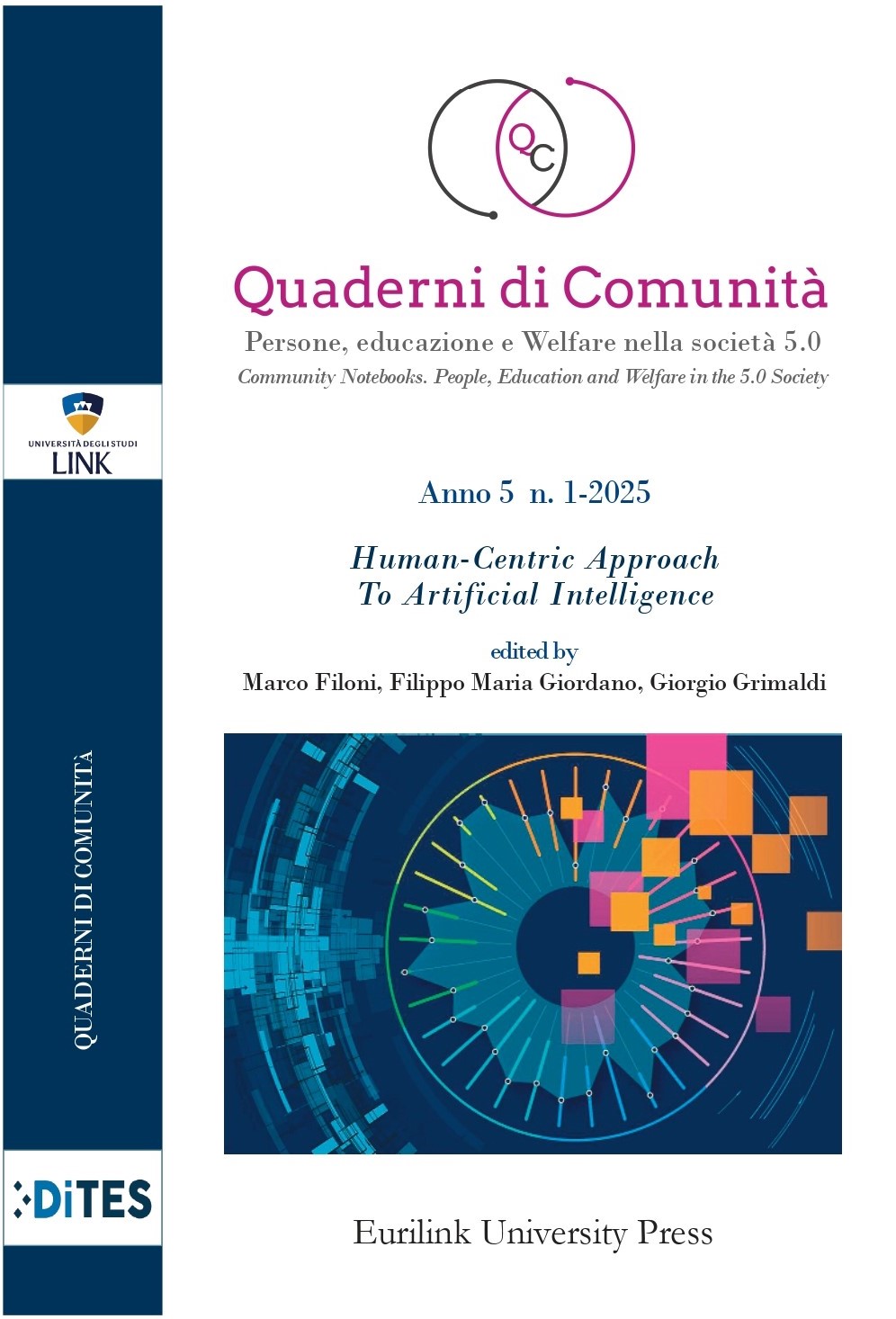Balancing Innovation and Equity: an Analysis of the European AI Act
DOI:
https://doi.org/10.61007/QdC.2025.1.284Keywords:
AI Act, innovation, Risk Classification, precautionary principle, problem of inductionAbstract
This section illustrates the regulatory logic of the European AI Act, Regulation (EU) 2024/1689, providing a systematic introduction through the precautionary principle framework. The analysis begins with the artificial intelligence definition contained in Article 3, highlighting the technical and philosophical criticalities characterizing such systems: from overfitting and data bias problems to the epistemological problem of induction in predictive inferences. The section demonstrates how the European legislator structured a normative response to technological uncertainty through a risk classification system articulated on four progressive levels: from expressly prohibited practices to high-risk systems, down to limited-risk and minimal-risk systems, each subject to differentiated obligations and controls.
References
Acemoglu, D. (2024). Redesigning AI: Work, Democracy, and Justice in the Age of Automation. Cambridge, MA: MIT Press.
Acemoglu, D., & Restrepo, P. (2019). Automation and New Tasks: How Technology Displaces and Reinstates Labor. Journal of Economic Perspectives, 33(2), 3-30.
Albanesi, S., Marinescu, I., & Schaumann, D. (2023). The Impact of AI on Labor Markets: Evidence from Online Job Postings. National Bureau of Economic Research Working Paper Series.
Barocas, S., Hardt, M., & Narayanan, A. (2019). Fairness and Machine Learning. In Proceedings of the 2019 Conference on Fairness, Accountability, and Transparency.
BBC. (2023, April). We’ll need universal basic income - AI’s godfather’. BBC News.
Binns, R. (2018). Fairness in machine learning: Lessons from political philosophy. In Proceedings of the 2018 Conference on Fairness, Accountability, and Transparency, 149-158.
Briggs, J., & Kodnani, D. (2023). The Potentially Large Effects of Artificial Intelligence on Economic Growth. Goldman Sachs Global Investment Research.
European Commission. (2022, June 16). A European approach to micro-credentials. Education and Training.
European Commission. (2024). AI Act: Regulation on artificial intelligence. Official Journal of the European Union.
Henderson, L. (Winter, 2022). The Problem of Induction. The Stanford Encyclopedia of Philosophy. Edward N. Zalta & Uri Nodelman (eds.), https://plato.stanford.edu/archives/win2022/entries/induction-problem/.
O’Neil, C. (2016). Weapons of math destruction: How big data increases inequality and threatens democracy. New York: Crown Publishing Group.
Smeds, E., & Smeds, E. (2020). The Greener State: Public services for a carbon-neutral Europe. https://core.ac.uk/download/481470986.pdf.
Stilgoe, J., Owen, R., & Macnaghten, P. (2013). Developing a framework for responsible innovation. Research Policy, 42(9), 1568-158.
Verlaat, T., de Kruijk, M., Rosenkranz, S., Groot, L., & Sanders, M.
(2020). Onderzoek Weten wat werkt: samen werken aan een betere bijstand, Eindrapport (What Works: Final Report). Utrecht: Utrecht University. https://www.uu.nl/en/publication/final-report-what-works-weten-wat-werkt.
Published
How to Cite
Issue
Section
License
Copyright (c) 2025 Community Notebook. People, Education and Welfare in the Society 5.0

This work is licensed under a Creative Commons Attribution-NonCommercial-NoDerivatives 4.0 International License.







